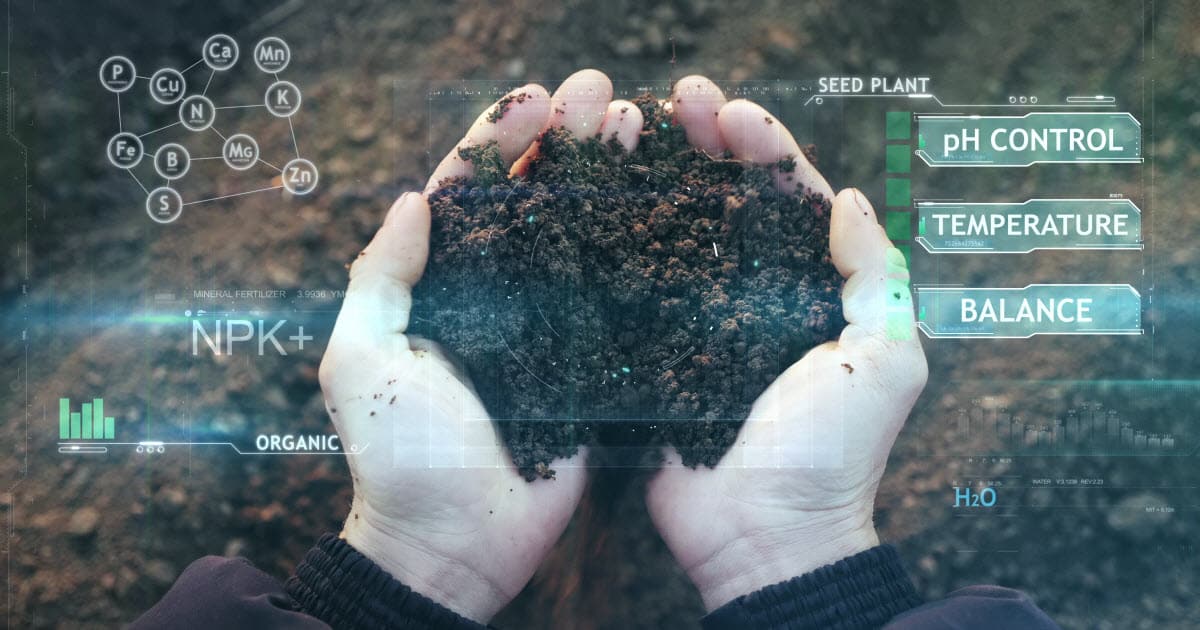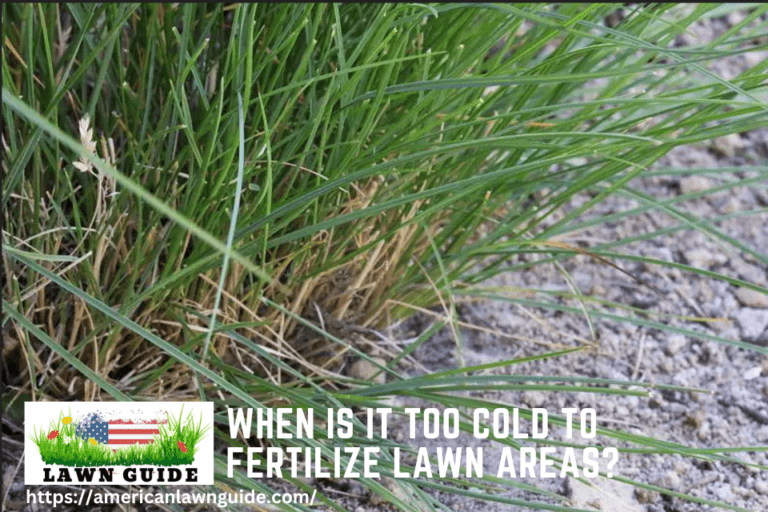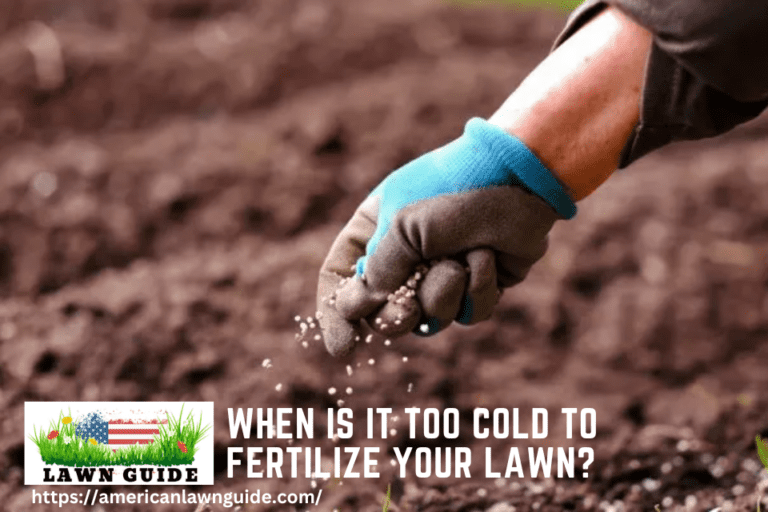The best lawn fertilizer ratio is 4-1-2. This means that for every 1,000 square feet of lawn, you should use 40 pounds of nitrogen, 10 pounds of phosphorus and 20 pounds of potassium. This ratio will provide your lawn with the nutrients it needs to be healthy and green.
Having a green, healthy lawn doesn’t just happen. It takes work, including regular fertilization. But what’s the best fertilizer ratio for a lush lawn?
There are three numbers on every fertilizer bag that indicate the percentage of nitrogen (N), phosphorus (P), and potassium (K) in the product. These are the macronutrients that your grass needs in order to thrive. The ideal ratio for most lawns is 3-1-2, which means 30% nitrogen, 10% phosphorus, and 20% potassium.
This blend will promote strong growth, deep roots, and disease resistance. Of course, every lawn is different and some may need more or less of certain nutrients. A soil test can help you determine the specific fertilizer ratios that your lawn needs.
Once you know what you’re looking for, be sure to read the labels on fertilizer products carefully so you can find one that matches your desired ratio.
What is the BEST LAWN Fertilizer – STOP Wasting Money!
What Does Fertilizer Do for Lawns?
The main reason that you fertilize your lawn is to help the grass remain healthy, typically green, and lush. Proper fertilization can also help the grass grow quickly and densely to prevent invasive weeds from damaging your lawn. The nutrients in the fertilizer help the grass stay full, which gives it a natural pest protection against chinch bugs, armyworms, sod webworms, and more. Plus, if your grass is nutrient-rich, it will be able to fight off most diseases naturally instead of succumbing to harmful microbes and other pests.
What Number Fertilizer is Best for Lawns?
There are a few things to understand about fertilizer and how it works to ensure that what you are applying to your lawn is giving your grass the best nutrients for its health. One of the most important things to know is that each number on the bag of fertilizer represents a certain nutrient in the mix. The first number represents the nitrogen, the second the phosphorous, and the last the potassium. The percentages that follow the numbers represent the amount of each nutrient in the mix.
The perfect ratio of nutrients is always changing and depends on your exact location and soil conditions. However, ideally you want a balanced ratio of all three main nutrients: nitrogen, phosphorous, and potassium. Depending on where you live, some general ratios can help you keep track of what you need.
A typical lawn fertilizer ratio might be 16-4-8, which is 16% nitrogen, 4% phosphorous, and 8% potassium. This will give your lawn the basic nutrients that it needs, without too much extra fertilizer that could damage the lawn rather than nourish it.
Is 20 20 20 Fertilizer Good for Lawns?
If you’re looking for a fertilizer that will give your lawn a quick boost, 20-20-20 is a good option. This type of fertilizer is high in nitrogen, phosphorus and potassium, which are essential nutrients for healthy grass growth. However, because it’s a fast-acting fertilizer, it’s important to apply it carefully so that you don’t burn your lawn.
What is the Best Ratio for Fertilizer?
There is no single answer to the question of what is the best ratio for fertilizer, as different crops and soil types require different amounts of nutrients. However, a good general rule of thumb is to use a fertilizer with an N-P-K (nitrogen, phosphorus, potassium) ratio of 10-10-10. This means that the fertilizer contains 10% nitrogen, 10% phosphorus, and 10% potassium by weight.
Different crops require different amounts of each nutrient in order to grow properly. For example, corn requires more nitrogen than phosphorus or potassium in order to grow properly, so a fertilizer with a higher nitrogen content would be ideal. On the other hand, potatoes need more phosphorus than nitrogen or potassium, so a fertilizer with a higher phosphorus content would be better suited for them.
The type of soil in which the crop is growing also affects how much fertilizer is needed. Sandy soils tend to have lower nutrient levels and therefore require more fertilization than clay soils, which have higher nutrient levels naturally. In short, there is no one-size-fits-all answer when it comes to choosing the right fertilizer ratio – it depends on the specific crop and soil type you are working with.
However, using a standard 10-10-10 fertilizer is usually a good place to start.
Is 20 10 10 Fertilizer Good for Lawns?
If you’re looking for a fertilizer that will give your lawn the nutrients it needs to be healthy and green, 20 10 10 is a good option. This fertilizer contains nitrogen, phosphorus and potassium in equal amounts, so it can provide a well-rounded diet for your grass. It’s also relatively easy to find and reasonably priced, making it a popular choice among gardeners.
Of course, like all fertilizers, 20 10 10 isn’t without its drawbacks. One potential downside is that the high nitrogen content can cause excessive growth if used improperly. This can lead to problems such as thinning grass, weak roots and brown patches.
It’s important to follow the manufacturer’s instructions carefully when using this product to avoid these issues. Overall, 20 10 10 fertilizer can be a great way to give your lawn the nutrients it needs to stay healthy and green. Just be sure to use it according to the directions on the package to avoid any problems.
What is 16 6 12 Fertilizer Good For?
If you’re looking for a versatile fertilizer that can be used on a variety of plants, then 16-6-12 fertilizer may be a good option for you. This type of fertilizer is made up of nitrogen, phosphorus and potassium, which are all important nutrients for plant growth. Nitrogen helps with leaf and stem growth, while phosphorus encourages root development and flowering.
Potassium aids in overall plant health and helps to resist disease. When using any type of fertilizer, it’s important to follow the directions on the packaging carefully. Over-fertilizing can damage your plants, so it’s always better to err on the side of caution.
With 16-6-12 fertilizer, you’ll typically want to apply it at a rate of 1 pound per 100 square feet of garden area. Be sure to water your plants well after applying the fertilizer so that it can reach the roots where it’s needed most.

Is 10 10 10 Fertilizer Good for Lawns?
A common fertilizer mix is 10-10-10, which is made up of 10% nitrogen, 10% phosphorous, and 10% potassium. This fertilizer ratio is ideal for many types of plants such as vegetables and flowers but is not always the best choice for lawns – especially lawns that are struggling. For lawns that need a boost, this fertilizer ratio often doesn’t have enough nitrogen.
Too much phosphorous isn’t usually a concern with grasses, but when it comes to nitrogen, more isn’t always better. However, there’s no harm in using a fertilizer ratio like this on your lawn, just make sure you aren’t overdoing the application.
What is 2 2 2 Fertilizer Good For?
Changing fertilizer ratios is sometimes necessary when you are trying to get your lawn looking its best. A common mix for lawns that aren’t getting the nutrients they need is 2-2-2. This ratio is high in nitrogen to help strengthen the grass and prevent the roots from becoming weak or dying off.
However, too much nitrogen can often cause the grass to grow too quickly at the expense of proper root development. If you want to use a fertilizer with a higher nitrogen percentage, stick to one that also has phosphorous and potassium in the mix to help balance out the higher nitrogen rate.
What is 5 5 5 Fertilizer Good For?
Another fertilizer ratio is 5-5-5, which is great for many types of plants including most grasses. This fertilizer promotes strong root development without promoting too much top growth. Because of this, you can use it on lawns that seem to be getting weak or thinning out. If your grass is starting to thin, then applying a fertilizer like this might help strengthen the roots and encourage new growth.
Is 15-15-15 Fertilizer Good for Lawns?
If you’re looking for a fertilizer to give your lawn a boost, you may have come across 15-15-15 fertilizer. But is this product actually good for lawns? The short answer is that 15-15-15 fertilizer can be beneficial for lawns, but it’s not necessarily the best option out there.
This type of fertilizer is a complete fertilizer, meaning that it contains all three of the major nutrients that plants need: nitrogen, phosphorus, and potassium. However, the proportions of these nutrients in 15-15-15 fertilizer are not always ideal for lawns. Nitrogen is important for promoting growth and greening up your grass, but too much nitrogen can actually cause your grass to grow too quickly.
This can lead to weak roots and an increased susceptibility to disease and pests. Phosphorus is essential for root development, but too much phosphorus can encourage unwanted weed growth. And finally, potassium helps promote overall plant health and stress tolerance, but like nitrogen, too much potassium can also cause problems such as shallow rooting and increased susceptibility to disease.
So while 15-15-15 fertilizer can be used on lawns, it’s important to apply it carefully and according to the manufacturer’s instructions. It’s also a good idea to test your soil before applying any type of fertilizer so that you can tailor your application accordingly.
Best Lawn Fertilizer Ratio for Fall
It’s that time of year again – time to start thinking about your lawn and what you can do to make it look its best. One important thing to consider is the fertilizer ratio you use. The best lawn fertilizer ratio for fall is 4-1-2.
This means that for every 100 square feet of lawn, you should use 4 pounds of nitrogen, 1 pound of phosphorus, and 2 pounds of potassium. Why is this the best ratio? Nitrogen is the nutrient that helps your grass grow the most during the fall months.
Phosphorus helps promote root growth, which is important as your grass prepares for winter. Potassium helps your grass withstand stress from cold weather and heavy foot traffic. Using the right fertilizer ratio in the fall will help ensure a healthy, green lawn come springtime.
So don’t wait – head to your local garden center or home improvement store and pick up a bag (or two) of 4-1-2 fertilizer today!
Best Fertilizer Ratio for Grass in Summer
It’s no secret that a healthy, green lawn is the envy of every neighborhood. While there are many factors that go into having a lush lawn, one of the most important is using the right fertilizer. With so many different types and brands of fertilizer on the market, it can be hard to know which one is best for your grass.
When it comes to fertilizing your lawn, timing is everything. Apply too early in the season and you risk burning your grass; apply too late and you won’t see the results you’re hoping for. So, when is the best time to fertilize your grass?
The answer may surprise you… Contrary to popular belief, fall is actually the best time to fertilize your grass. That’s because cool-season grasses (the type of grass most commonly found in North America) grow best in cooler weather.
Fertilizing in fall gives your grass a chance to store nutrients over winter so it can come back strong in spring. Of course, if you live in an area with warm-season grasses (like Bermuda or St. Augustine), then you’ll want to wait until spring or early summer to apply fertilizer. As for how often to fertilize, most experts recommend doing it at least once per year – preferably in fall – but twice per year is even better.
If you live in an area with high foot traffic (like around a playground or pool), then you may need to fertilize more frequently to keep your grass looking its best.
Conclusion
The best lawn fertilizer ratio is 3-1-2. This means that for every 1,000 square feet of lawn, you should use 3 pounds of nitrogen, 1 pound of phosphorus, and 2 pounds of potassium. This ratio will provide your lawn with the nutrients it needs to stay healthy and green.




